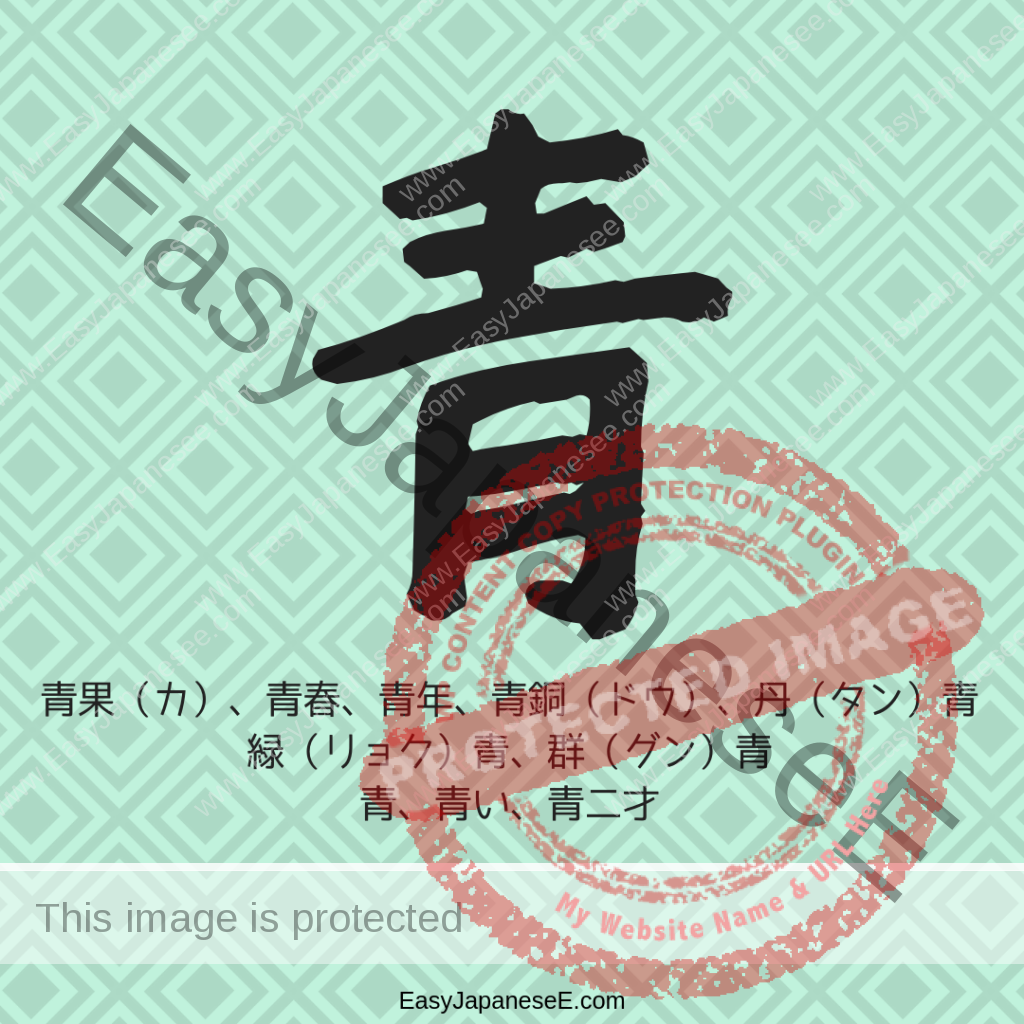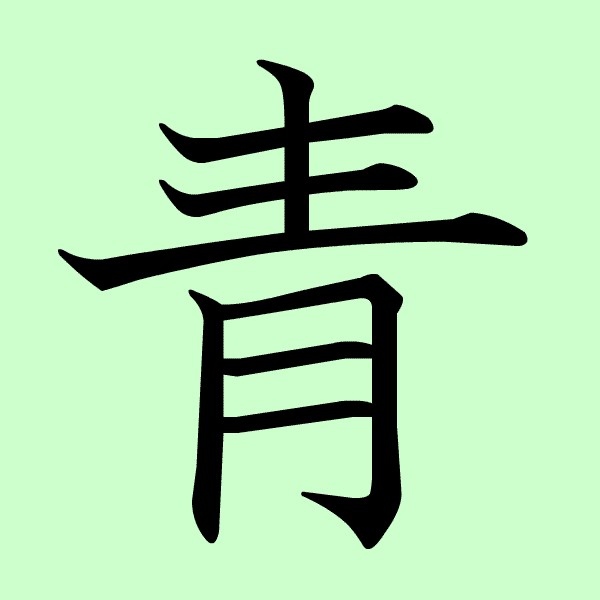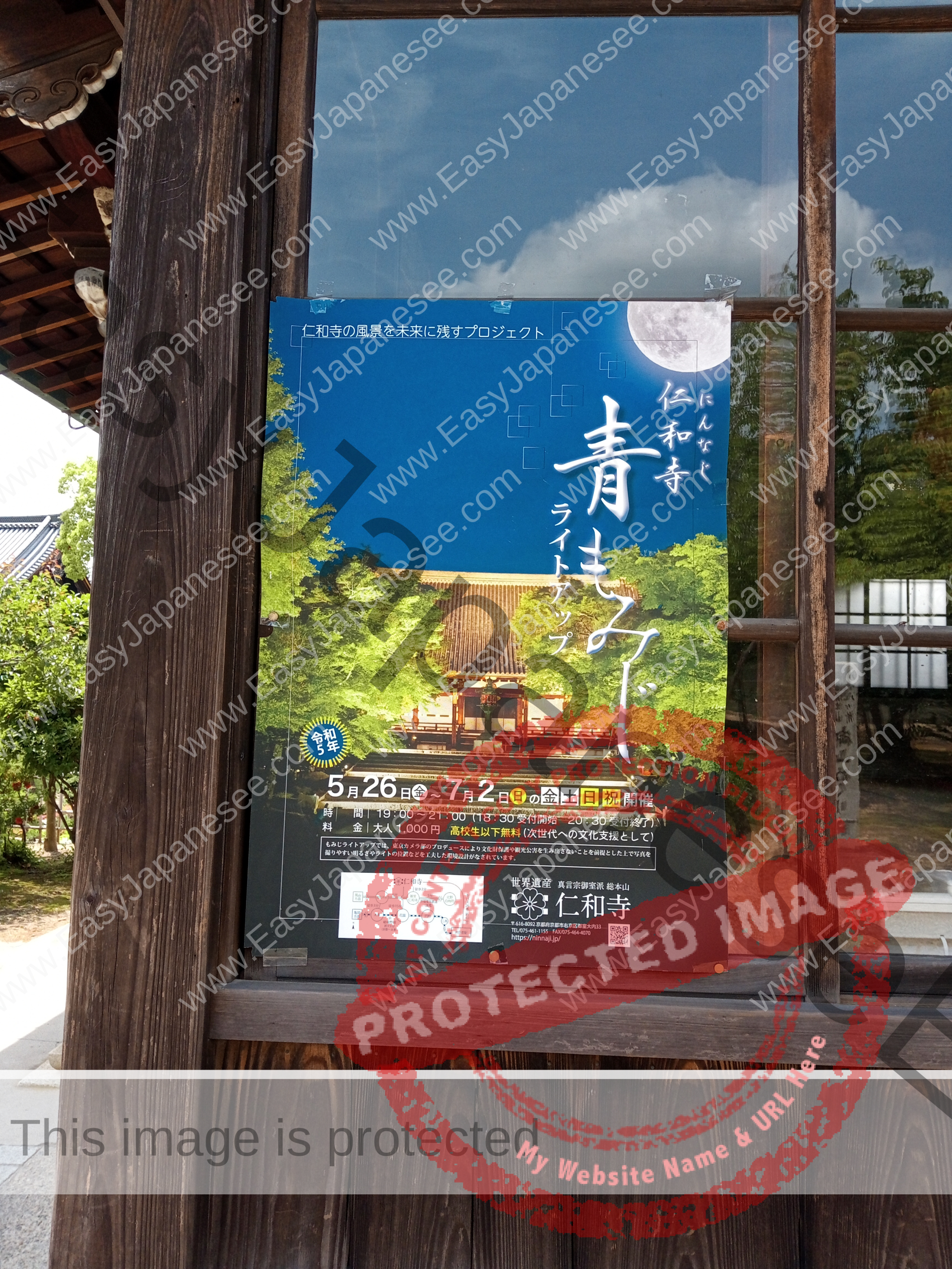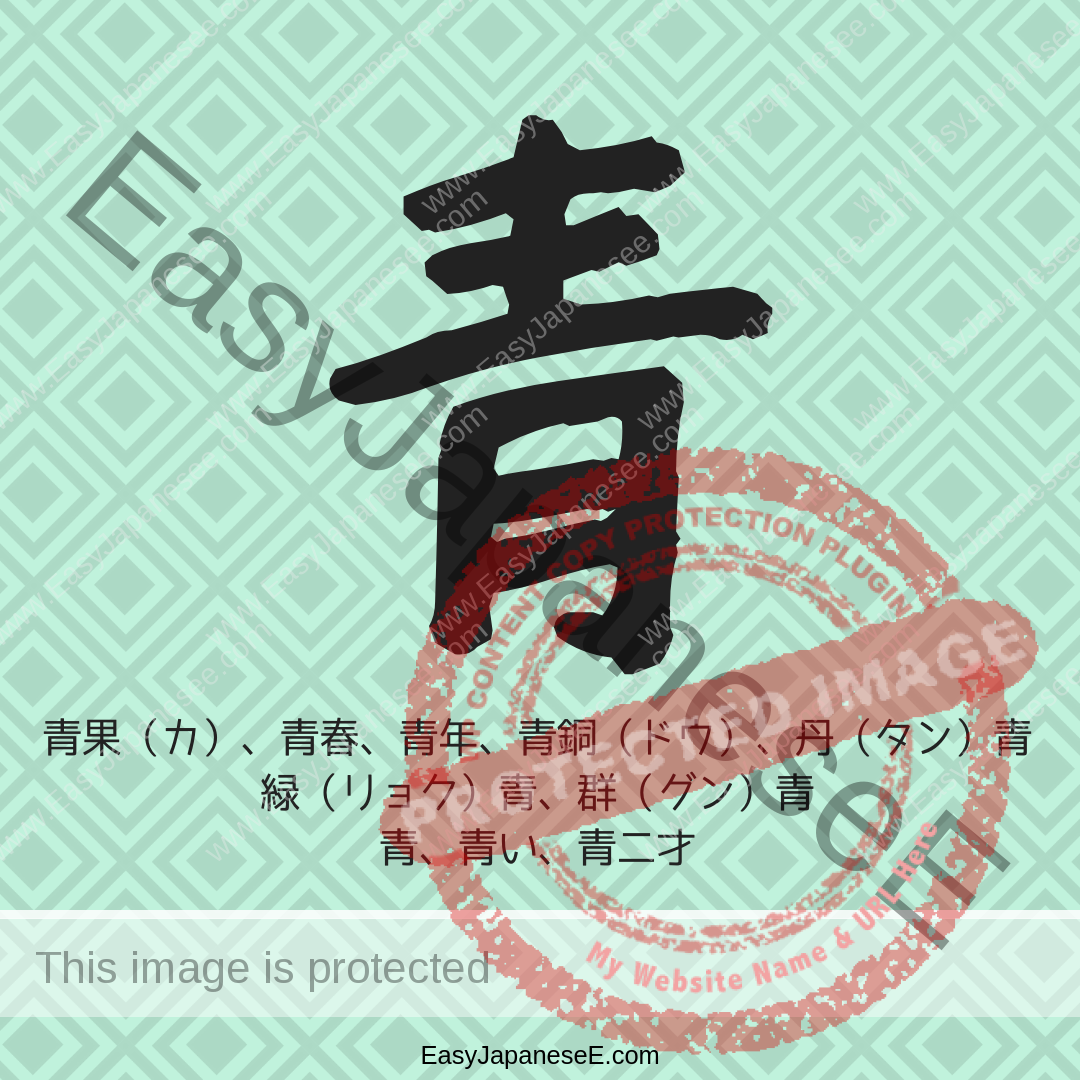

#青 is listed under the radical of 靑, which is the old form of this character 青. My dictionary lists many theories how this kanji was formed, but none of them makes much sense to me….
It’s easier to remember ”trying to stab 3 (三)pancakes with a stick (|) on the moon (月)”!
Today’s Kanji is 青, which means “blue” in general but 青 has a bit wider meaning in Japanese.
It can be read as セイ、ショウ(ジョウ)、あお
青果(セイカ): vegetables and fruits
青春(セイシュン): youth, the springtime of life
青年(セイネン): a youth, young people
青銅(セイドウ): bronze
丹青(タンセイ): red and blue
緑青(ロクショウ): copper rust, verdigris
群青(グンジョウ): ultramarine, azure
青(あお): blue (noun), green
青(あお)い: blue (i-adj), green, pale, immature
青(あお)二才(ニサイ): an immature youth
A bit more about the nuance
青/青い has meanings of “green,” “pale” or “immature” on top of “blue” in Japanese.
- ジョンさんは青い顔をしていた。John looked pale.
- ホウレン草とか青いものも食べなさい. You should also eat some greens such as spinach.
- 青りんご – a green apple
- 青いりんご – an unripe apple

If we write もみじ, maple, in Kanji, we write it as 紅葉. The first kanji 紅 when read as くれない is a colour “red” or “crimson” while it can be read as べに as in 口紅 (rouge, a lipstick) or 頬紅 (blusher). 葉 means a leaf, leaves. Thus もみじ, maple, literally means “red leaves.” So when the maple leaves are in their original colour “green,” they describe them as 青もみじ, green maple leaves.
If you liked this article, please share it with your friends using the social media buttons below.

